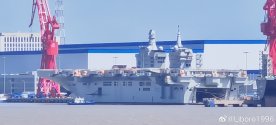why would you do that though? that's would entirely bypass the efficiency you get from centralized power generation that charges the batteries to power each motors.
Electric drive is better for dynamic load when the load distribution among radar, propulsion etc. constantly change in a short period of time. There is penalty of efficiency in electric drive when you convert mechanical energy to electricity (4%) through power grid (?%) then back to mechanic (driving motor 4%). Direct drive's penalty is less than 2% (gear box).
Ships have a total installed power that match the power that ships ever need. Assuming that is 100%, for most of time ships only need X% to run. That percentage depens on type of operation. Y=100-X is the reserved power or boost power that is needed in minority of operation time. Ships that cruise most of time (passenger, cargo ships or LHA/CV) has lower demand of Y, and Y is close to a constant, ships that need extreme acceleration and maneuverability (frigate, destroyer) need big dynamic Y. In any way, if Y is for constant load (propulsion boost), then direct drive is more efficient saving the cost of 2 way conversion. If Y is dynamic (partially for propulsion and radar/weapon, or differenct acceleration) then it is better to use electric drive with energy storage as buffer.
In conclusion, IEPS is preferable but with a set of conditions, power steps of primary mover, operation profile, distribution of various load types.






